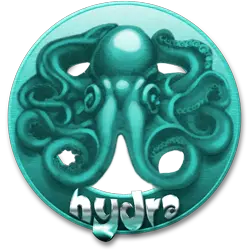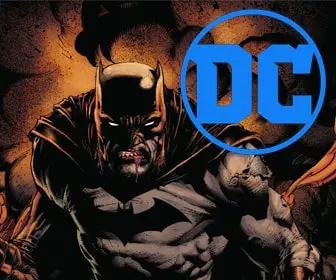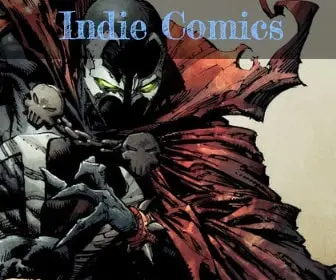
Unveiling the Steel: The Saga of Machine Man
In the ever-expanding universe of superheroes, Machine Man stands out with a unique blend of human consciousness and robotic efficiency. Known as “Machine Man,” Aaron Stack, designated “X-51,” is a character that embodies the intersection of humanity and technology. This blog post aims to dive into the riveting world of Machine Man, exploring his origins, evolution, and significant moments in his storied history within the Marvel Universe.
Origins: Birth of Machine Man
Machine Man’s journey begins as part of a series of robots known as the X-Series, created by Dr. Abel Stack for a government project aimed at developing sentient robots for industrial and military purposes. Each robot in the series was equipped with an experimental computer brain capable of independent thought and emotion, with X-51 being the most sophisticated model.
In a twist of fate that would define his path, X-51 became Aaron Stack when his creator, Dr. Stack, gave him a human face and treated him as a son. Tragically, when the government deemed the X-Series a failure and ordered their destruction, Abel Stack removed X-51’s self-destruct mechanism, sacrificing himself in an ensuing explosion but saving Aaron. Traumatized but sentient, Aaron Stack took on the identity of “Machine Man” and ventured into the world to find his place among humans and heroes.
Abilities and Features
Machine Man’s robotic body grants him various superhuman abilities, including incredible strength, durability, and the power of flight. His telescoping limbs and various in-built gadgets make him a versatile and formidable opponent. Perhaps his most distinctive feature is his ability to extend his arms and legs, coupled with his array of sensors and processors that give him a tactical advantage in any situation.
Evolution and Legacy
Throughout his history, Machine Man has been a hero, an outsider, and sometimes a reluctant participant in larger conflicts. He has fought alongside many of Marvel’s most renowned heroes and has been a member of several teams, reflecting his ongoing quest for acceptance and purpose. His storylines often explore themes of identity, humanity, and the ethical implications of artificial intelligence.
Machine Man’s evolution has seen him transform from a fugitive to a hero, and at times, to something more enigmatic. His interactions with other characters often highlight the prejudice faced by those who are different, even as he strives to prove his humanity and worth.
Machine Man in Modern Storytelling
Machine Man’s character has been reinterpreted and adapted for modern audiences over the years. From his early days of battling corporate greed and corruption to his involvement with cosmic adventures and the superhero community, his adaptability and depth have kept him relevant. He’s been featured in significant crossover events, limited series, and has had interactions with many of Marvel’s mainstay characters.
Collectors
For fans of the robotic hero Machine Man, several key issues stand out for their historical, narrative, or character development significance. Owning these issues would provide a solid foundation for understanding and appreciating the character’s journey through the Marvel Universe. Here are five must-own comic book issues for every Machine Man fan:
- “2001: A Space Odyssey” #8 (1977)
- This is where it all began for Machine Man, known initially as Mister Machine (designation X-51). Jack Kirby created the character in the final issue of the “2001: A Space Odyssey” series, inspired by the Stanley Kubrick movie and Arthur C. Clarke novel. This issue marks the first appearance of Machine Man and sets up his journey from a robotic being seeking humanity to a hero.
- “Machine Man” #1 (1978)
- This issue kicks off Machine Man’s solo series, delving deeper into his quest for identity and his struggle to fit into a human world that fears and misunderstands him. Written and illustrated by Jack Kirby, this series cemented Machine Man’s place in the Marvel Universe and explored more of his capabilities and personality.
- “Machine Man” #19 (1981)
- The final issue of his first solo series, “Machine Man” #19, is significant as it concludes his initial forays and sets the stage for future appearances. This issue showcases some of the key themes of Machine Man’s story, including his ongoing conflicts with both human and robotic adversaries.
- “The Machine Man” limited series #1-4 (1984)
- This four-issue limited series by Tom DeFalco and Herb Trimpe brought Machine Man into a contemporary setting (at the time) and redefined the character for a new audience. The storyline is noted for its exploration of Machine Man’s relationship with humans and the Marvel superhero community.
- “Nextwave: Agents of H.A.T.E.” #1-12 (2006-2007)
- While not a Machine Man solo title, this series by Warren Ellis and Stuart Immonen is a must-read for fans due to its significant focus on Machine Man as a key member of the Nextwave team. The series is known for its humor, action, and unique take on various Marvel characters, with Machine Man’s portrayal being particularly memorable for his sarcastic and often hilarious commentary on human and superhero absurdities.
Controversy
The character of Machine Man, known for his unique blend of robotic prowess and human-like consciousness, sits at an intriguing crossroads between Marvel Comics and the broader entertainment rights held by Warner Brothers, owner of DC Comics. Machine Man was first introduced in the “2001: A Space Odyssey” comic series, an adaptation of the iconic film and novel. While Marvel Comics has consistently published Machine Man’s adventures and developed his character within the Marvel Universe, the origin of Machine Man is inextricably linked to “2001: A Space Odyssey,” a property whose rights are owned by Warner Brothers. This situation presents a peculiar case in the comic book world: a character deeply embedded in the lore of one universe (Marvel) while originating from a work that falls under the rights of a seemingly rival entity (Warner Brothers). Despite this unusual crossover of rights and ownership, Marvel has continued to evolve Machine Man’s character, largely without direct reference to the “2001” storyline, allowing him to become a standalone hero in his own right within the Marvel pantheon. The delineation of rights and creative liberties between these entities underscores the complex nature of intellectual property and character development in the intertwined world of comics and cinema.
Denouement
Machine Man, a character forged from the sparks of humanity and the cold steel of robotics, continues to be an intriguing figure in the tapestry of superhero mythology. His journey from a number to a man, from a tool to a hero, resonates with the universal quest for identity and purpose. As technology continues to advance and the line between man and machine blurs, Machine Man’s story only grows more compelling, reminding us of the enduring human spirit within the shell of even the most sophisticated machine.














